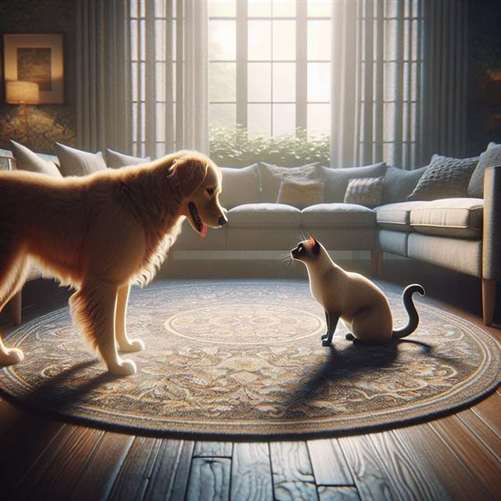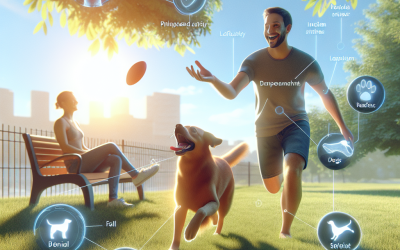How to Introduce Cats and Dogs to Each Other
Introduction
Did you know that studies suggest cats and dogs can coexist peacefully, contrary to popular belief? In fact, many households around the world successfully maintain both species under one roof. However, the process of How to Introduce Cats and Dogs to Each Other can be challenging, requiring patience and strategy. This article aims to guide you through the necessary steps to help your cat and dog become the best of friends.
As pet ownership becomes increasingly popular, many people find themselves in mixed-pet households. While this can be rewarding, it often comes with unique challenges, especially during the introduction phase. The initial meeting between a cat and a dog can set the tone for their future interactions, making it crucial to approach this process thoughtfully.
In this article, you will learn about the preparation needed for successful introductions, effective techniques to use during the process, and common pitfalls to avoid. Whether you’re a new pet owner or looking to introduce a new furry friend into your home, understanding How to Introduce Cats and Dogs to Each Other is essential for fostering a harmonious environment.
Let’s dive into what this process entails and how you can ensure a smooth transition for your beloved pets.
What is How to Introduce Cats and Dogs to Each Other?
Definition
How to Introduce Cats and Dogs to Each Other refers to the systematic approach of familiarizing these two species to minimize stress and promote a peaceful coexistence. This process involves careful planning, gradual introductions, and monitoring behaviors to ensure both pets feel safe and comfortable.
Historical Context
Historically, cats and dogs have shared homes for thousands of years. While they belong to different species with diverse instincts and behaviors, humans have found ways to help them coexist. Understanding their natural instincts can significantly influence how we approach their introductions.
The Importance of How to Introduce Cats and Dogs to Each Other
A successful introduction is crucial not just for the pets but also for maintaining peace in the household. Proper introductions can lead to reduced stress, improved behavior, and a happier living environment for both pets and their owners.
How to Introduce Cats and Dogs to Each Other in the Context of Pet Ownership
For pet owners, ensuring that their cat and dog get along is not merely about avoiding conflict; it also involves creating a loving, secure space where both pets can thrive. A harmonious relationship can lead to less anxiety for the animals and a more enjoyable experience for the owners.
Key Players or Contributors
In this journey, various professionals contribute valuable insights. Trainers, veterinarians, and behavioral experts play a significant role in offering guidance and tips. Their expertise can be crucial when facing challenges during the introduction process.
For those interested in effective methods, exploring effective pet training techniques can provide additional resources to ease the process.

How Does How to Introduce Cats and Dogs to Each Other Work?
The Mechanics of How to Introduce Cats and Dogs to Each Other
Introducing a cat to a dog requires a structured approach. Follow these steps to ensure a smooth introduction:
-
Preparation: Before the introduction, prepare your home by designating separate spaces for each pet. This allows them to feel secure in their environment.
-
Scent Exchange: Begin the introduction process by allowing your pets to become familiar with each other’s scent. You can achieve this by swapping their bedding or toys.
-
Controlled Meeting: Use a leash for the dog during the initial meeting. Keep the cat in a secure area where it can observe the dog without feeling threatened.
-
Short Interactions: Allow brief interactions and gradually increase the duration as they become more comfortable. Always supervise these interactions to prevent any aggressive behavior.
-
Positive Reinforcement: Reward both pets with treats and praise for calm behavior during their meetings. This reinforces positive associations with each other.
-
Patience is Key: Understand that this process may take time. Each pet will adjust at its own pace. Be prepared for setbacks, and don’t rush the process.
Technological Foundations of How to Introduce Cats and Dogs to Each Other
In today’s digital age, several tools can aid in the introduction process. Training apps and behavioral guides can provide valuable insights and techniques tailored to your pets’ needs. These resources often include videos, step-by-step instructions, and community support, making them excellent for new pet owners.
Real-World Applications of How to Introduce Cats and Dogs to Each Other
Many pet owners have successfully navigated this process. Real-world stories often highlight the importance of patience and understanding during introductions. For example, a family shared their experience of introducing a rescue dog to their cat. They took it slow, following the steps above, and eventually, the two became inseparable companions.
Benefits of Successfully Introducing Cats and Dogs to Each Other
Successfully introducing cats and dogs can yield numerous benefits:
- Improved Behavior: Pets that feel secure with each other are less likely to exhibit aggressive or anxious behaviors.
- Enhanced Bonding: Strong relationships between pets can lead to more harmonious households.
- Socialization Skills: Pets learn to socialize better with other animals, which is beneficial for their overall development.
For additional tips on keeping your pets healthy and happy, consider exploring resources on gut health for pets.
Common Pitfalls to Avoid During the Introduction Process
Understanding what not to do is as crucial as knowing the right steps. Here are some common pitfalls:
- Rushing the Process: Each pet requires time to adjust. Forcing interactions can lead to fear and aggression.
- Ignoring Body Language: Pay attention to your pets’ body language. Signs of stress or anxiety should not be overlooked.
- Neglecting Individual Spaces: Ensure each pet has its own safe space where it can retreat when feeling overwhelmed.
By being aware of these potential issues, you’ll be better equipped to handle the introduction process effectively.
Future Trends in Pet Introductions
As pet ownership trends evolve, more resources will become available for introducing pets to each other. Expect to see advancements in:
- Behavioral Technology: Tools that use AI to analyze pet behavior and provide personalized advice could become commonplace.
- Community Support: Online forums and support groups dedicated to pet introductions will likely expand, offering shared experiences and advice.
For those interested in connecting with other pet owners, consider joining pet forums to share experiences and gather tips from others who have successfully introduced their pets.
Conclusion
Successfully introducing cats and dogs can be an enriching experience for both pets and owners. By following the structured steps outlined in this article, you can foster a peaceful environment where both your cat and dog can thrive. Remember, patience is vital, and understanding your pets’ unique behaviors will help pave the way for a harmonious household.
As you embark on this journey, keep in mind the importance of resources like pet training techniques and community support. With dedication and the right approach, you can ensure that your pets become loyal companions, enhancing the joy of pet ownership.
Make sure to revisit this guide as you navigate the introduction process, and don’t hesitate to reach out for further assistance or advice. Happy pet parenting!
Resource Links:
- animalhumanesociety.org: Confine your new pet in a sanctuary room with the door closed or a separate floor of your house. The goal is to allow the pets to get used to each other’s …
- americanhumane.org: … Allow both animals to be in the same room at the same time, but keep the dog securely leashed. Securing the cat in a harness with a leash for …
- bestfriends.org: Start waiting your dog out, and only mark if your dog will look at the cat and then look right back at you. If they do, either click or use the verbal marker …




0 Comments